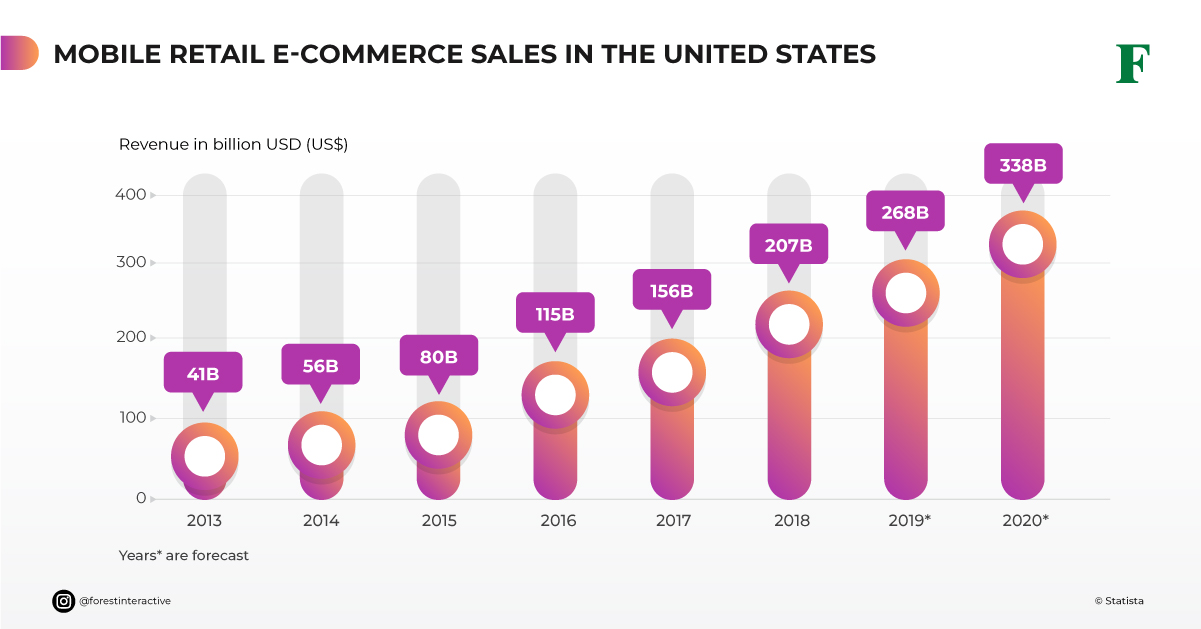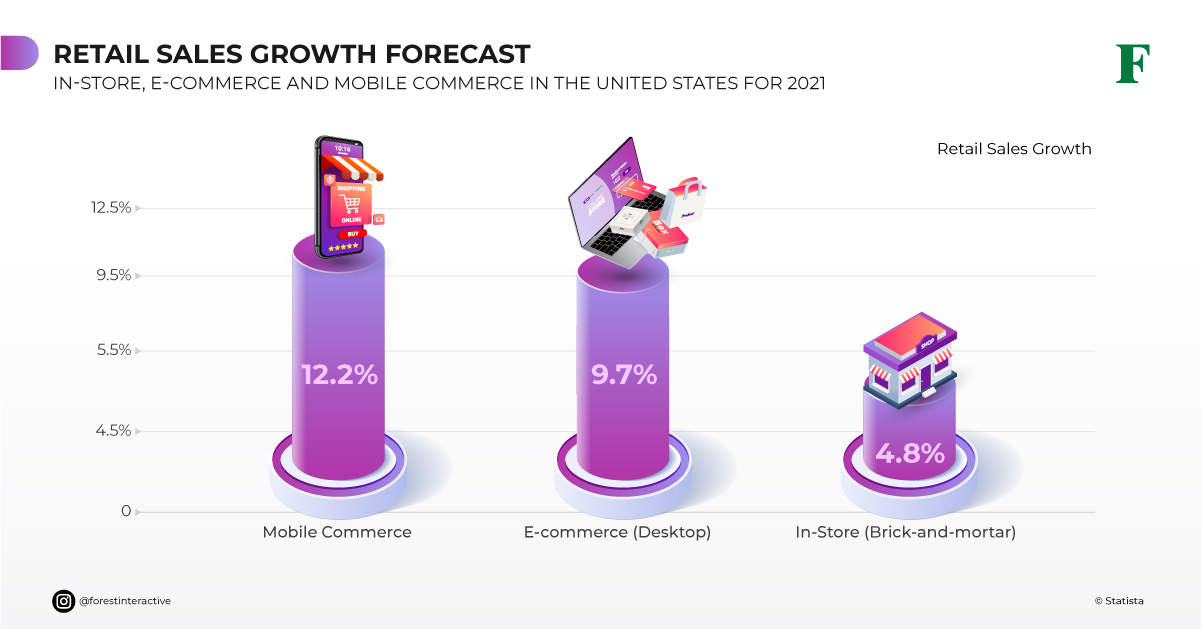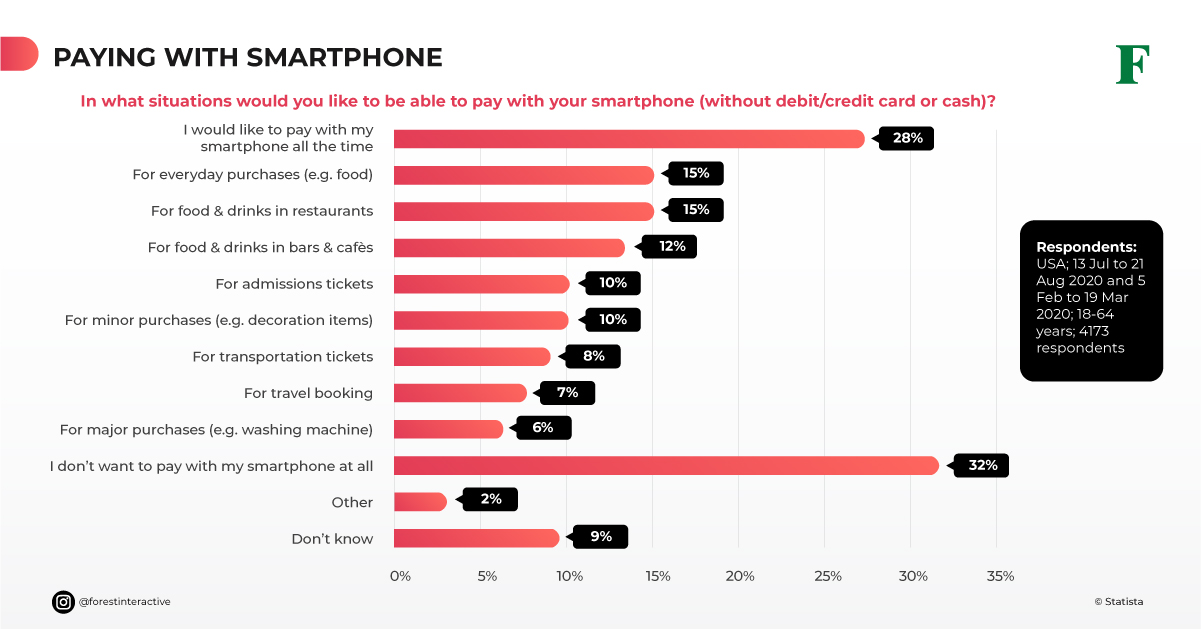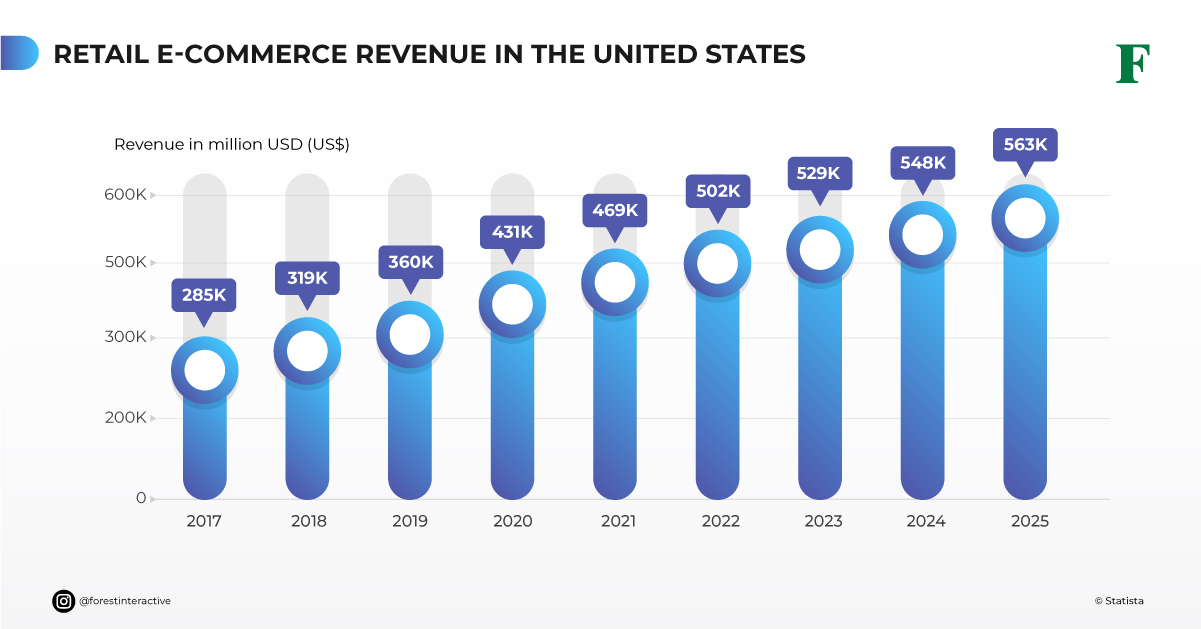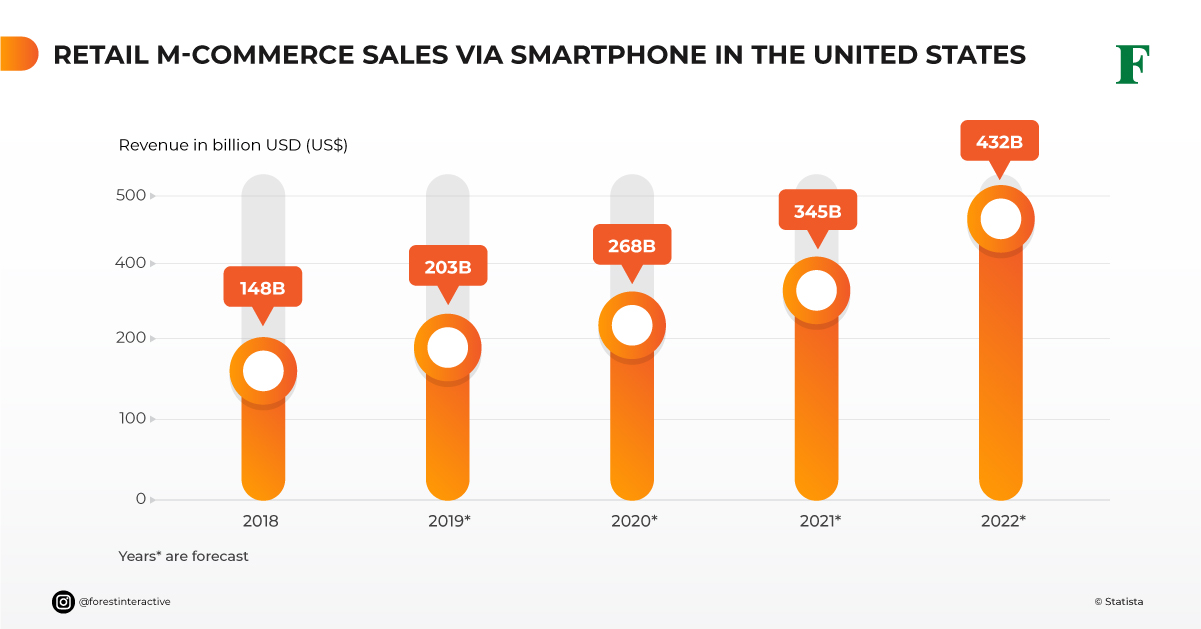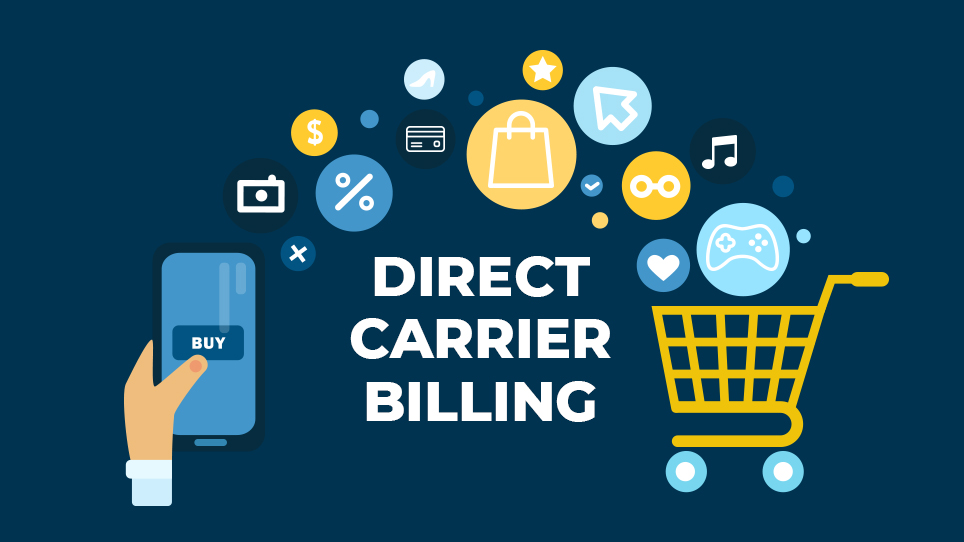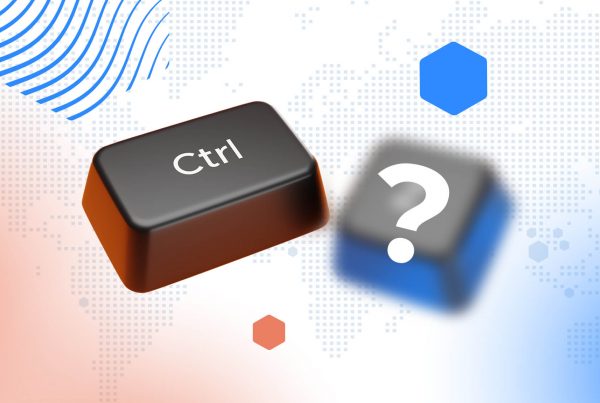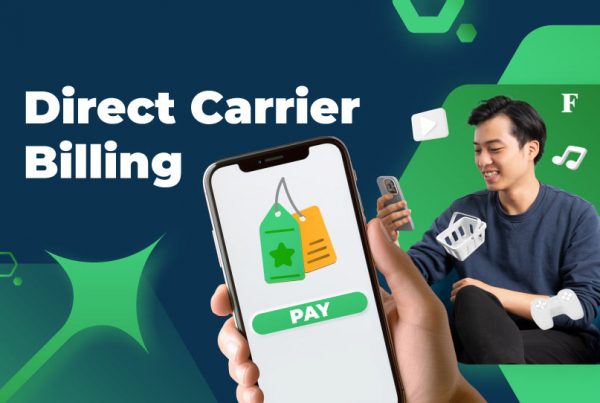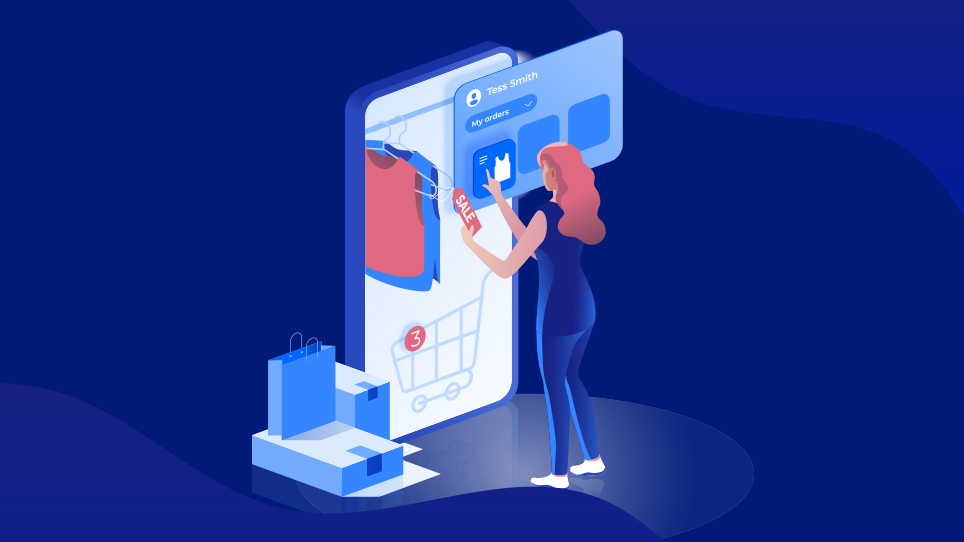
Over the course of a decade, e-commerce services has evolved from being a simple counterpart of brick-and-mortar retail businesses to a global shopping ecosystem that involves multiple connected devices. Goods and services are being offered to customers via new shopping experiences and online store concepts.
When looking at the US e-commerce landscape, in particular, we see a relatively mature market with established players. However, the pace of digital transformation shows no signs of stopping. The flow of innovation coming from numerous start-ups and cashflow from a digitally-savvy generation of users is prompting great changes in the market.
E-commerce Services Is Shifting Towards Mobile Commerce
While COVID-19 may be subsiding in the US, and society can slowly return to normal, many industries still feel the residual effects. Even throughout the first year of the pandemic, the surge in online sales continued, reinforcing the upward trend of digital adoption in e-commerce sites and mobile payments.
Infographic source: Statista
Technology has become the norm for retail stores, with increased implementation during the economic crisis to counter in-store sales decline. The shift online has increased demand for mobile commerce. The time spent on mobile devices has grown, enhancing the overall shopping experience.
Infographic source: Statista
Compared to a 4.8% growth forecast for in-store sales, mobile commerce and e-commerce were predicted to have a 12.2% and 9.7% increase, respectively, in retail sales for 2021. The shift towards online offerings prompts increased customer expectations, particularly for flexible and convenient payment methods.
Mobile Retail: Mobile Payments Continue to Serve Online Shopping Habits
It’s unclear whether the recent shift in customer purchasing behavior will be permanent after lifting movement control measures. What is known is that our mobile phones have become a vital part of us. They simplify and serve many aspects of our everyday lifestyle.
The problems caused by the pandemic only made mobile phones more valuable, particularly in terms of making payments. There is a growing list of goods people can now purchase via their mobile phones. In an era where convenience and promptness are key, everything from fashion and electronics to toys, hobby & DIY is available for online purchase 24/7.
Infographic source: Statista
Despite growing awareness and adoption of e-commerce, there is some concern about online payment amongst consumers. People are wary about the security and availability of digital payment channels. It will continue to be a challenge for merchants and digital solutions providers to effectively communicate the value and data security of these channels.
The negative perception is expected to gradually dissipate as technology infrastructure improves over time. In fact, statistics show significant gains in the next 4-5 years due to the rapid adoption of digital payments.
Infographic source: Statista
Upon reviewing the advantages of mobile commerce, businesses recognize the importance of the mobile customer experience. It’s crucial for providing better e-commerce services. Developers constantly create apps to optimize the shopping journey, increase customer loyalty, and reduce the number of clicks to purchase. Nowadays, e-wallets make shopping on the go much easier.
Infographic source: Statista
At the end of the day, meeting consumers’ expectations is still central to any good business strategy. Customers are open to new and innovative services as long as they can see a benefit or alleviation of an issue.
Direct Carrier Billing: A Solution for Sustaining Online Sales?
During the lockdown and economic uncertainty, consumers explored new channels. They may not have considered these or been aware of them previously. New levels of technology adoption and a willingness to try different purchasing channels have led to a growing customer base in the digital payments market.
Prompting an acceleration in the implementation of better e-commerce services then, consumers may now demand, or at least expect, omnichannel services from companies. Direct carrier billing can be a way for companies to differentiate themselves from their competitors in highly saturated, competitive environments.
Forest Interactive’s Direct Carrier Billing (DCB) is a Platform-as-a-Service (PaaS) that provides the best purchasing experience in online and mobile environments. DCB allows for broader payment coverage than traditional methods like credit cards. It charges payments to customers’ mobile phone bills.
Get in touch today for help in supporting smoother digital payments for mobile commerce.
If you’re interested in reading more insightful statistics, please click the button below to get your own free copy of the full report .
